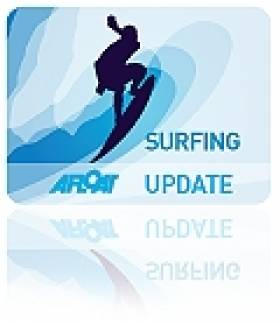Displaying items by tag: Stephen Kilfeather
Kilfeather Retains Irish Open Surf Title
Stephen Kilfeather retained his Irish Open Surfing Championship title at last weekend's County Sligo Open.
The 24-year-old Sligo native squeaked past fellow Team Ireland members Cain Kilcullen and Ronan Oertzen to clinch the title for the second year in a row at the final event of the 2011 Irish surfing tour.
“I’m stoked to win it again," said Kilfeather, who also came first at the weekend. "Back to back for two years running is a great achievement.”
He said the competition was “a great warm-up for the European Surfing Championships in Bundoran" next month.
Team Ireland members did well in the overall rankings in Sligo, with John Britton taking the senior title, Ashleigh Smith the women’s body board title, Shane Meehan the Bodyboard title, Easkey Britton the women’s title and John McCurry regaining the longboard title. Team Ireland manager Stevie Burns was also successful, winning the Masters title.






























































